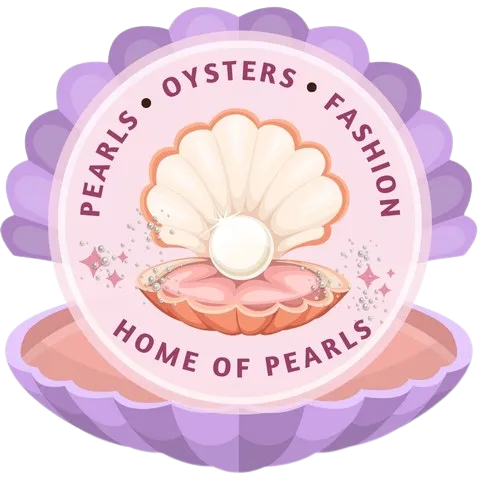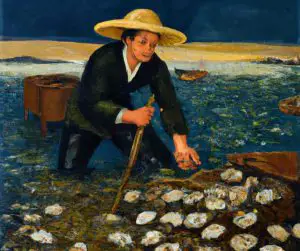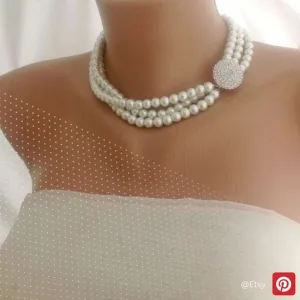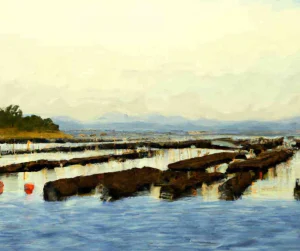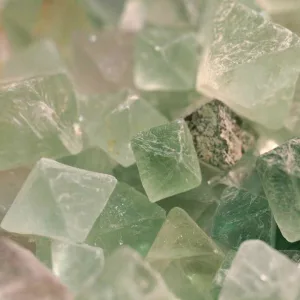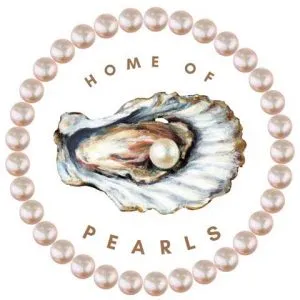Before plunging into the topic of cultured pearls, I want to remind you of the nomenclature rules set by the World Jewelry Confederation (CIBJO), which apply terms that clearly define the nature of pearls. There are three types of pearls in general; these are natural, cultured, and imitation.
Table of Contents
- What are Imitation pearls?
- What are Cultured Pearls?
- Processing of cultured pearls to enhance their quality
- Can cultured pearls be of any color?
- How to identify pearls that have been dyed or irradiated.
What are Imitation pearls?
Imitation pearls are made of a spherical (or other shapes) bead material that is covered with a shimmering surface layer. The lacquer gives a pearly luster imitating that of the natural pearl, which can be found accidentally in wild oysters.
Regardless of whether the bead used inside is made of glass, plastic, or shell, such products must be called imitations.
Great effort is put in by producers to make their imitations appear more natural – or at least cultured – by selling them under fancy names like Majorica and shell pearl.
What are Cultured Pearls?
The majority of pearls available in the market today are cultured pearls, and tonnes of them are produced in saltwater and freshwater pearl farms worldwide. As cultured pearls result from the reaction of the shell on a transplanted piece of mantle tissue that is artificially introduced, they are not considered natural pearls according to the rules of nomenclature. Two major techniques can be applied to all kinds of shells – the tissue transplant can be made alone or by adding a bead.
Such products have to be termed cultured pearls, and this includes those shells that might have rejected the implanted bead after the operation.
Cultured pearls are usually presented to the public with descriptive labels – such as freshwater, South Sea, Tahiti, and Kasumigaura – which differentiates them from other types of cultured pearls. These additional terms often exclude the term ‘cultured pearl’ from the products when they are sold.
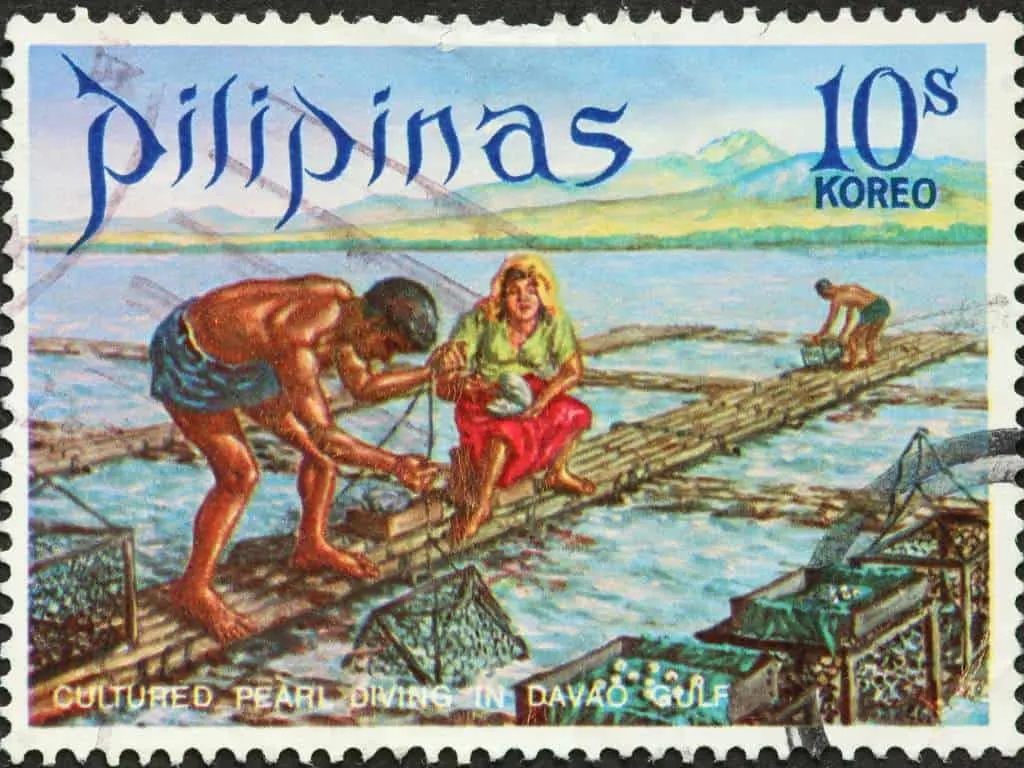
Processing of cultured pearls to enhance their quality
Although human intervention is involved in the production of cultured pearls, the gemstone may not be formed as ideally as desired. In reality, a large number of pearls, when harvested, are far from perfect for pleasing the producer and the consumer.
Because both natural and cultured pearls are expensive, different means are taken to make them appear as flawless as possible. Competition among producers is stiff, and any cosmetic enhancements made can greatly increase the sales prospects and fetch a higher selling price.

Enhancements made to improve the quality of pearls are difficult to define. Most processes include gentle actions like washing, removing attachments from the shell body, or slightly polishing the surface.
As pure white pearls are in high demand and most pearls come in a creamy tone, bleaching has become an option to meet consumers’ requests.
Bleaching may be done with chemical substances (for instance, immersing the pearls in a 1:20 hydrogen peroxide-solvent solution at 30°C for a few days) and also exposure to bright tube light.
The surface of pearls can be conditioned in tumblers with bamboo pieces before they are waxed for a final polish.
All such soft treatments are considered ‘processing’ rather than ‘treatment’. More severe interventions leading to changes in the appearance of pearls, on the other hand, must be called treatments.
All coloring actions, such as dyeing and irradiation, are considered treatments and have to be disclosed at the time of sale and on bills in accordance with nomenclature rules. Besides bleaching, changing the original coloration of pearls is another method producers take. Coloring can be done by immersion into dyes or by irradiation. One of the oldest pearl dyeing procedures that have been practiced is the use of silver nitrate (AgNO3) solution.
This chemical is usually applied on drilled pearls so that it is soaked up by the nucleus as well as the cultured pearl coating. A major portion of the dye is usually deposited in the gap between the core bead and its overgrowth. The resultant color is grey to silvery black, depending on the concentration of the solution.
Freshwater pearls, on the other hand, can be irradiated grey as they contain manganese, a trace element necessary for successful treatment. Those cultured pearls whose beads are of freshwater nacre (Akoya, for example) are also susceptible to irradiation.
Cultured pearls can also be stained pink or golden. It is surprising to see that even undrilled golden South Sea cultured pearls may be artificially colored throughout by effective dyes with very strong penetrative power.
Many small Chinese freshwater cultured pearls are dyed by immersion to shades of green, violet, pink and golden brown.
Some of the stained pearls even come in unusual shades of chocolate brown. It is obvious that some coloring agents and methods of changing the color of cultured pearls are still unrevealed and kept secret.
While the removal of shape deviations by grinding and polishing is not frequently performed by sellers, the polishing of the surface on polishing wheels seems to be a standard for some types of cultured pearls.
Finally, the shape and luster are important factors that affect a pearl’s quality. While removal of shape deviations by grinding and polishing is not frequently performed, the polishing of the surface on polishing wheels seems to be a standard for some types of cultured pearls.
Surface polishes can be easily recognized with magnification, either with an optical microscope or with a scanning electron microscope, where the characteristic step-like arrangement of aragonite tablets on the pearl’s surface appears eroded and scratched.
Sometimes, the luster can be so strong that the pearls look unnatural. The use of polymer coatings may be responsible for the pearls’ appearance, and such coatings have been reported in the literature. The soft consistency of polymer coatings can be determined with a needle.
Can cultured pearls be of any color?

Many of the pleasant pastel colors encountered in Chinese freshwater pearls are natural. Deriving their hues from the black Pinctada margaritifera shell, Tahiti cultured pearls usually have natural grey to near black body color on which intense iridescence is visible. Terms like ‘peacock’ are used to describe the effect.
Pearls from the gold-lipped Pinctada maxima may show golden tones, but when they exhibit tones that are too strong, it becomes suspicious whether they have undergone treatment or not.
For the cultured pearl trade, it is thus important to be informed about possible color treatments. Of course, it is best that those who perform the coloration would disclose it, but too often, it is left to the laboratories (and independent appraisers) to identify the color origin.
How to identify pearls that have been dyed or irradiated.
The recognition of dyed pearls may be quite simple with some magnification. Color concentrations around the drill hole provide safe proof.
In many cases, the coloring agent can be dissolved with acetone, and a small drop of the solvent used may leave a trace on a white paper towel. Dyed golden cultured pearls present a tough challenge as no straightforward method of detection has been established.
Microscopic evidence, in some cases, may help with the identification. However, most of the color authenticity tests are a matter of instrumental analysis that requires a well-trained laboratory gemologist and sophisticated equipment.
